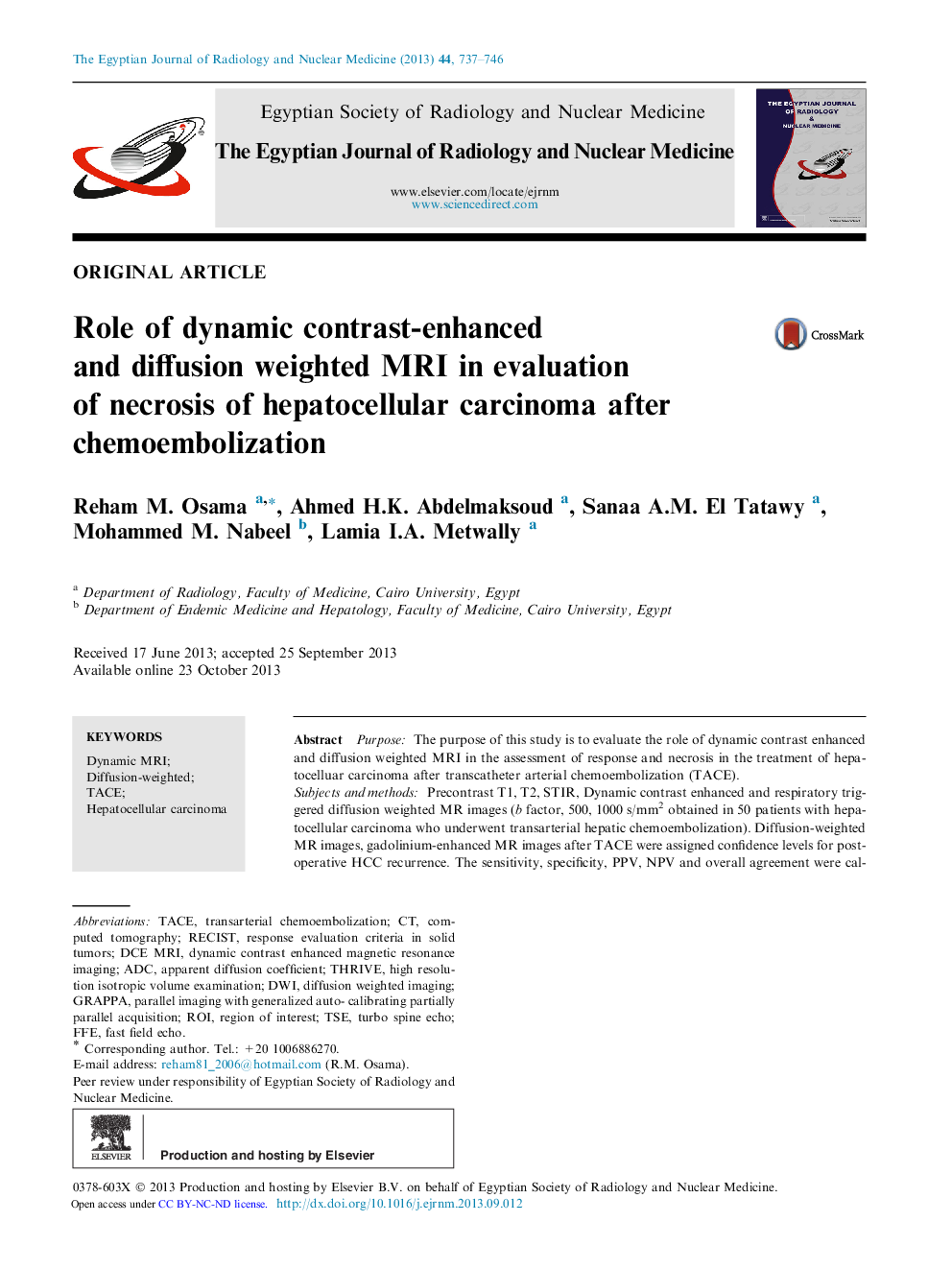| کد مقاله | کد نشریه | سال انتشار | مقاله انگلیسی | نسخه تمام متن |
|---|---|---|---|---|
| 4224596 | 1609636 | 2013 | 10 صفحه PDF | دانلود رایگان |

PurposeThe purpose of this study is to evaluate the role of dynamic contrast enhanced and diffusion weighted MRI in the assessment of response and necrosis in the treatment of hepatocelluar carcinoma after transcatheter arterial chemoembolization (TACE).Subjects and methodsPrecontrast T1, T2, STIR, Dynamic contrast enhanced and respiratory triggered diffusion weighted MR images (b factor, 500, 1000 s/mm2 obtained in 50 patients with hepatocellular carcinoma who underwent transarterial hepatic chemoembolization). Diffusion-weighted MR images, gadolinium-enhanced MR images after TACE were assigned confidence levels for postoperative HCC recurrence. The sensitivity, specificity, PPV, NPV and overall agreement were calculated for both the dynamic and the DWI images. Apparent diffusion coefficients (ADCs) were calculated searching for a cut off value using the ROC curve.ResultsDynamic MRI had a sensitivity of 90.5%, a specificity of 96.6%, a positive predictive value of 95%, a negative predictive value of 93.3% and an overall agreement of 94% compared to 100%, 65.5%, 67.7%, 100% and 80% respectively of diffusion weighted imaging.The difference between the malignant and benign groups’ ADC variables was statistically significant P value 0.006.The ROC curve showed that the area under the curve is C = 0.728 with SE = 0.075 and 95% CI from 0.582 to 0.874.ConclusionDiffusion weighted MR imaging has lower specificity compared to dynamic MRI with increased false positives. We suggest that increase is due to intralesional hemorrhage or liquefactive necrosis causing diffusion restriction. Diffusion weighted imaging may act as a supplementary sequence to compensate the dynamic MRI in patients who could not hold their breath adequately.
Journal: The Egyptian Journal of Radiology and Nuclear Medicine - Volume 44, Issue 4, December 2013, Pages 737–746